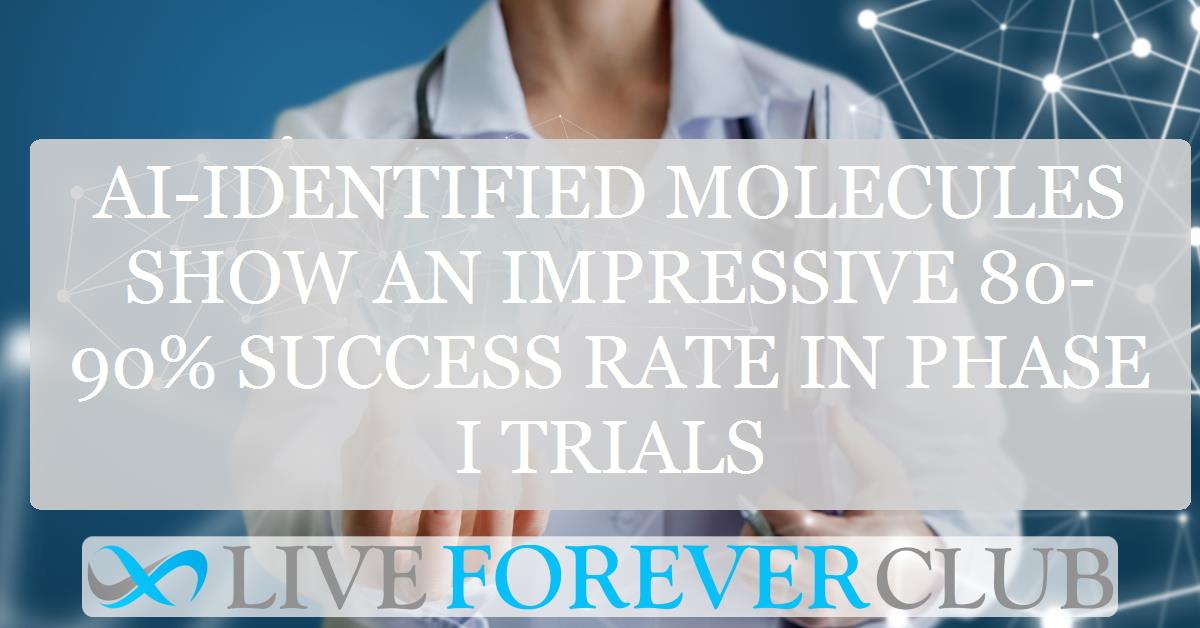Drug discovery is a lengthy and costly process filled with uncertainties. Traditional methods often take years to yield results, especially for new small molecules, which typically take four to six years to discover. Biologics and vaccines can be somewhat faster but remain complex and risky to develop.
This landscape is starting to change with the advent of artificial intelligence (AI), which promises to revolutionize the drug discovery process by performing many of the most time-consuming, repetitive, and costly steps in silico, vastly increasing the scale of exploration.
The Journey of AI-Discovered Drugs
AI techniques are making significant inroads into drug discovery. A growing number of drugs and vaccines discovered using AI are showing promising results in clinical trials. Our analysis indicates that AI-discovered molecules have an 80-90% success rate in Phase I trials, which is substantially higher than the historic industry averages. This suggests that AI is highly capable of designing or identifying molecules with drug-like properties. In Phase II, the success rate is around 40%, comparable to historic industry averages, although based on a limited sample size. These early signs highlight the clinical potential of AI-discovered molecules.
Breaking Down the Phases
In Phase I trials, AI-discovered molecules have shown an impressive success rate of 80-90%. This phase primarily focuses on assessing the safety of a new drug, and the high success rate suggests that AI is effectively identifying molecules that are not only potent but also safe for human use.
In Phase II, the focus shifts to evaluating the drug's efficacy. Here, the success rate drops to around 40%, which aligns with historical averages. This phase often presents more challenges as it requires proving the drug’s effectiveness in treating the targeted condition.
Why AI-Discovered Drugs Succeed
AI algorithms may be more successful than traditional methods due to the following reasons:
AI Algorithms and Drug-Like Molecules
Adept at Selecting Drug-Like Molecules:
AI algorithms excel in identifying molecules that possess drug-like properties. Traditional drug discovery often involves a trial-and-error approach to finding compounds that can potentially work as drugs. In contrast, AI leverages vast amounts of data and sophisticated algorithms to predict which molecules are likely to be effective and safe. This data-driven approach increases the likelihood that the selected molecules will perform well in initial safety trials.
Fine-Tuning and Optimizing Molecular Structures:
AI algorithms can fine-tune and optimize the structures of these molecules. Fine-tuning involves adjusting the chemical structure of a molecule to enhance its properties, such as its ability to bind to a target protein or its stability in the body. Optimization can include making the molecule more soluble in water, which is crucial for it to be absorbed into the bloodstream, or altering its structure to avoid rapid breakdown by the liver. These adjustments improve the molecule's chances of successfully passing through Phase I trials, which primarily assess safety and tolerability in humans.
Reducing Phase I Dropouts:
By selecting and optimizing molecules with favorable properties, AI reduces the risk of dropouts during Phase I trials. Dropouts occur when a molecule fails to meet the safety criteria or causes adverse effects in participants. AI's precision in selecting well-suited candidates means fewer molecules fail due to unforeseen safety issues, leading to higher success rates.
Targeting Well-Validated Biological Pathways
Well-Validated Biological Pathways:
AI discovery efforts often focus on well-validated biological pathways. These are pathways in the body that have been extensively studied and are known to play critical roles in disease processes. Targeting these pathways increases the likelihood that a drug will have the desired effect because the underlying biology is well understood.
Reducing On-Target Toxicity:
On-target toxicity occurs when a drug affects its intended target but causes harmful side effects. By focusing on well-validated pathways, AI reduces the risk of such toxicity. Researchers already have substantial knowledge about the potential side effects of targeting these pathways, allowing them to design drugs that minimize these risks. As a result, drugs targeting well-validated pathways are more likely to be safe, contributing to higher success rates in Phase I trials.
Exploring Novel Chemical Spaces
Novel Chemical Spaces:
AI's ability to explore novel chemical spaces means it can identify unique molecules that have not been previously considered in drug discovery. Traditional methods might overlook these molecules due to the vast number of potential compounds. AI, however, can efficiently search through this vast chemical space to find new candidates with promising properties.
Optimized ADME Properties:
ADME stands for Absorption, Distribution, Metabolism, and Excretion, which are critical properties for any drug. A drug must be absorbed into the bloodstream, distributed to the target tissue, metabolized at an appropriate rate, and excreted from the body without causing harm. AI can predict and optimize these properties, designing molecules that are well-suited for human use. For instance, it can predict how a molecule will be absorbed in the intestines or how quickly it will be broken down by liver enzymes, and adjust its structure accordingly.
Enhanced Safety Profiles:
By optimizing ADME properties, AI ensures that the molecules not only reach their targets effectively but also do so safely. Molecules with optimized ADME profiles are less likely to cause side effects related to poor absorption, rapid breakdown, or accumulation in the body. This careful design leads to better safety profiles, increasing the likelihood that the drug will pass early clinical trials.
Challenges and Limitations
Despite these promising results, the analysis comes with limitations. The sample size of AI-discovered molecules in clinical trials remains small. As more data become available, these numbers might change significantly. Also, the analysis includes only molecules from AI-native biotech companies and their pharmaceutical partners, not accounting for AI-discovered molecules originating purely from within larger pharma companies.
The drop-off in Phase II success rates could stem from various factors, including the inherent challenges of proving clinical efficacy and potential business decisions to discontinue trials due to shifting priorities or funding issues.
The Future of AI in Drug Discovery
Looking ahead, AI techniques have the potential to further improve clinical performance, especially in later-stage trials. As understanding of disease mechanisms deepens and AI algorithms continue to evolve, the identification and validation of drug targets could become more precise. Efforts are underway to bridge the gap between molecule design and clinical efficacy, focusing on OMICs and phenotypic data generation, reverse translation, and novel patient-derived models.
If the observed success rates for AI-discovered molecules in early clinical phases hold, and if combined with historic Phase III success rates, the overall probability of a molecule succeeding across all clinical phases could significantly increase. This would represent a substantial boost in pharmaceutical R&D productivity, enabling companies to either achieve the same output with fewer resources or launch more new drugs with the same resources.
AI-discovered molecules are showing high success rates in early clinical trials, indicating the potential for AI to revolutionize drug discovery. While challenges and limitations remain, the future looks promising. As AI techniques continue to evolve and more data become available, we can expect further improvements in drug discovery and development, ultimately bringing innovative medicines to patients faster and more efficiently.
The study by Boston Consulting Group is published in the journal Drug Discovery Today.




